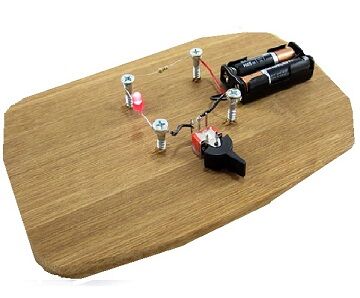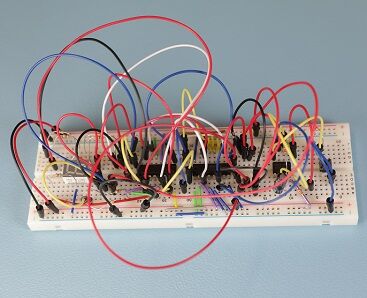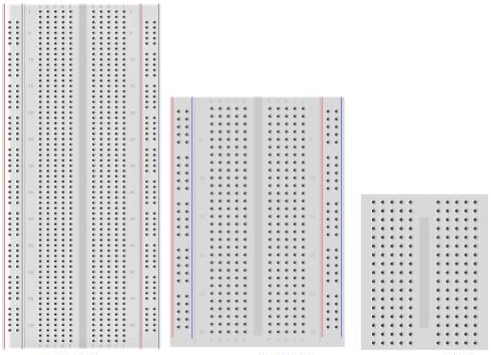What is a breadboard?
The breadboard or solderless breadboard is the most popular tool used for prototyping (building temporary electronic circuits and testing them before the final version is permanently designed) without any need for soldering.
You can use it as an independent circuit to create your project, or it can be used as an auxiliary part of the main circuit such as Arduino or Raspberry pi.
The breadboard has a user-friendly construction and quite a safe layout, which make it an important step for newcomers to electronics who wish to test their ideas in quick experiments. However, you can use the breadboard to build all types of electronics projects, starting from very basic circuits to the most complicated robotics.
What’s the reason behind the name “breadboard”?
You may ask “what does a breadboard have to do with electronics?” And if your imagination pictures a fresh loaf on a piece of wood, then you are not far from guessing where the name comes from.
The name “breadboard” goes way back to the days when people would literally use a piece of wood on which they sliced bread, in order to construct electronic circuits. They used nails and wires to connect up the components. Nowadays, the new generation of “breadboard” is made from a rectangular piece of plastic, but we still refer to them by the name “breadboard.”
 Breadboard circuit in the past Breadboard circuit in the past |
 Breadboard circuit today Breadboard circuit today |
Types of breadboard
Breadboards come in various brands and sizes to suit the requirements of the electronic circuit. Nevertheless, all breadboards share the same fundamentals and ideas.
Here are some types of a standard breadboard:
- Full-size
- Half-size
- Mini
 Three types of a breadboard Three types of a breadboard |
Moreover, there are different colors of breadboards (white, blue, red, green, yellow, transparent).
 |
Colors of the breadboard



